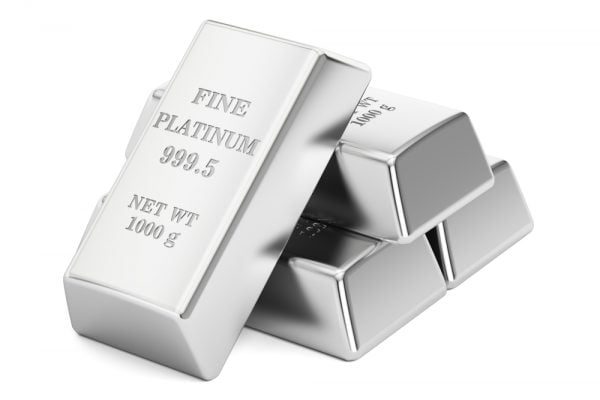Investor interest in platinum is surging due to a persistent supply deficit, rising demand, and a widening price gap with gold, making it an increasingly attractive asset.
By Ryan Chigoche
With gold prices soaring recently, this disparity has caught the attention of investors, particularly in Europe and North America, where platinum’s relatively lower price presents a compelling diversification opportunity.
Investors are engaging with platinum through multiple avenues, including physical holdings such as bars and coins, exchange-traded funds (ETFs) that track platinum prices, and futures contracts on commodity exchanges like NYMEX.
While some may also invest indirectly through shares in platinum mining companies, the current market focus is primarily on physical platinum and financial instruments tied to its price movements.
Since 2022, the platinum market has remained in a structural deficit, with demand consistently outpacing supply.
This shortfall is expected to persist despite global economic and geopolitical uncertainties. A key demand driver is the automotive sector, where platinum remains essential.
Despite concerns about the rapid adoption of electric vehicles (EVs), platinum demand is projected to stay strong. By 2025, automotive platinum consumption is expected to be 6% above the ten-year average, even as the Battery Electric Vehicle (BEV) market share grows by 22% year-over-year.
Platinum also plays a crucial role in green technology and industrial applications, reinforcing its strong fundamentals. However, the market has yet to fully reflect these attributes in its price.
In recent years, platinum prices experienced a sharp decline, dropping to $796.80 per ounce in September 2022—a 33.5% fall from the March 2022 high of $1,197 per ounce. Since then, prices have been on a steady upward trajectory, reaching approximately $965 per ounce as of March 2025.
This 21.2% rebound signals resilience in the platinum market and suggests that strong fundamentals could drive further appreciation. Although prices remain below historic highs, the positive momentum has led some investors to speculate that platinum could eventually reclaim its $1,197 peak in the coming months or years.
The platinum deficit is forecast to reach 848,000 ounces in 2025, a gap so significant that only major market shifts could alter it. Consequently, above-ground platinum stocks are rapidly depleting, pushing investors toward the metal as a safe-haven asset. Its substantial discount to gold further enhances its investment appeal.
Investor confidence is evident in the growing demand for platinum bars, coins, and exchange-traded funds (ETFs). In 2024, ETF holdings increased by 296,000 ounces, with another 100,000-ounce rise expected in 2025. Potential U.S. tariffs on platinum imports add further uncertainty, potentially disrupting trade flows and creating domestic shortages.
This has led to an increase in platinum deposits into NYMEX-approved storage facilities, with exchange-held stocks expected to rise by 50,000 ounces in 2024 and 150,000 ounces in 2025.
The shift of platinum into exchange inventories, which began in late 2024, reflects investor caution over possible tariffs. While these stocks increase the visibility of platinum holdings, they do not represent new supply but rather a reallocation of existing material.
Another key market factor is the potential change in Russian supply dynamics. With ongoing U.S.-Russia peace talks, the possibility of lifted sanctions could increase Russian platinum availability. However, reports indicate that Russian platinum continues to reach markets despite existing sanctions, meaning any policy shifts may have a limited impact.
Global economic uncertainty has further fueled interest in alternative investments, with many viewing platinum as an undervalued asset. The World Platinum Investment Council (WPIC) has played a key role in raising awareness of platinum’s investment potential, encouraging more investors to recognize its ability to protect long-term wealth.
In summary, platinum’s structural deficit and declining above-ground stocks suggest that the current imbalance is unsustainable without a price adjustment.
Given the relative inelasticity of both supply and demand, platinum presents a compelling investment opportunity. As market conditions evolve, the metal’s value is likely to strengthen, driven by persistent deficits and shifting geopolitical factors, as reported by the WPIC.
.png)




